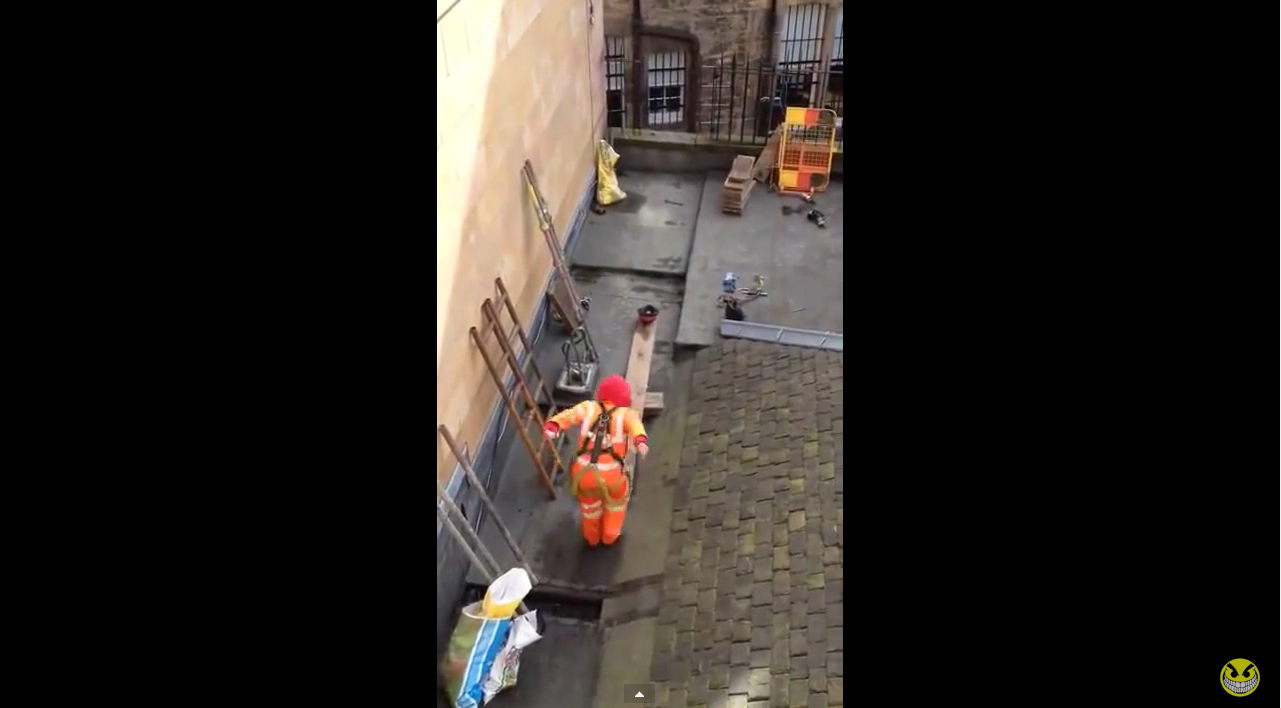The video below shows a Scottish construction worker cleverly trying to land a hard hat on his head by creating a catapult with a piece of lumber. It doesn't go very well.
Read moreWhat to Do if You Find an Underground Storage Tank on Your Construction Job Site
Photo by the US Army Environmental Command
According to the Environmental Protection Agency (EPA), there are over 500,000 underground storage tanks (USTs) in the United States that contain petroleum or other hazardous substances. The materials held in many USTs are dangerous to the earth and to humans if they are released from the tank. Find out what you should do if you find a UST on your job site...
Read moreCool Tools: Zero-Noise & Zero-Emissions Mobile Power Source
Photo courtesy of Boulder Power Technologies
Generators are great for supplying power to job sites where temporary power is not yet available, but, unfortunately, the loud noise and gasoline fumes also accompany the convenience. This can be especially problematic near residential neighborhoods where noise restrictions are in place, and in enclosed spaces, which cause hazardous air quality conditions for your employees. Boulder Power Technologies has just released a solution to this problem...
Read moreThe seashell-inspired material inspiring a new wave of safety gear in sport
Photo by David Eickhoff, CC BY
The risk of injury in professional sport has been a central feature in recent debates about how well protected our stars are. Only recently, Argentine football player Emanuel Ortega died of a fatal head injury after hitting a concrete wall during a game. Find out about the new technology that hopes to reduce head injuries...
Read moreMIT Researchers Have Discovered How to Visually Capture the Motion of Cranes
MIT
Anyone who has actually been close to a tower crane hundreds of feet in the air knows just how much they can sway and move. The problem is...how do we measure it?
Read moreOSHA Develops App for Heat Safety
The construction busy season is upon us and, unfortunately, so is the blistering heat and humidity. Heat related illnesses are a serious concern in the construction industry and OSHA has put forth a campaign to raise awareness for prevention. Heat related illnesses include heat stroke, heat exhaustion, heat cramps, and heat rash, and perhaps more importantly, their symptoms present very dangerous circumstances on a construction job site. Many of the illnesses can cause fainting, confusion, dizziness, weakness, and other pain, so you can imagine how that would cause issues with someone working 20 feet in the air needing to climb up and down ladders and scaffolds.
Read moreSpend Time and Money Training Your New Construction Hires to Save Time and Money Later
Photo by John Nakamura Remy
In an ideal world, we would all hire top notch carpenters, laborers, and other trades people with tons of experience for every single one of our construction job openings. Unfortunately, experience doesn’t develop quickly and training is the key to developing your talent.
Read moreBeef Up Your Construction Site Security With This Mobile All-in-one Lighting System
Totus Solutions
Theft is a big problem on job sites and it’s next to impossible to lock up and secure all of the valuable items on a job site at all times. According to the National Insurance Crime Bureau (NICB), there’s about a billion dollars worth of theft each year in the construction industry alone. ONE BILLION. That’s a lot of money to just be walking off of the job site.
Read moreAccessories to Keep You Cool on the Construction Site
Photo by Lauren Wellicome
Summer is coming and the work on your construction job isn’t going to stop because it’s hot out. So now is the time to start finding some accessories that keep you cool, hydrated, and comfortable so you can stay productive. We’ve compiled a list of places you can find cooling accessories with the construction worker in mind.
Read moreTell Us Your Construction Horror Stories!
No construction project is perfect, but some are worse than others. Many of us have had projects that just never seemed to end, with one problem after another. Whether its problems with the construction documents, weather, personnel, or your own mistakes, going through those types of situations make us better at our jobs. Or, at least, make us appreciate when things go right.
Read more









